Otoplasty in Hamburg
Search and Compare the Best Clinics and Doctors at the Lowest Prices for Otoplasty in Hamburg

Find the best clinics for Otoplasty in Hamburg
With Medijump you can browse 3 facilities offering Otoplasty procedures in Hamburg. The cheapest price available is $591 in Berlin. And for the cheapest price globally, prices start from $100 in Egypt.
Otoplasty in Germany
Price: $ 591
Otoplasty in Berlin
Price: $ 591
Egypt offers the best prices Worldwide
Price: $ 100
University Medical Center Hamburg-Eppendorf, located in Eppendorf, Hamburg, Germany offers patients Otoplasty procedures among its total of 288 available procedures, across 30 different specialties. Currently, there's no pricing information for Otoplasty procedures at University Medical Center Hamburg-Eppendorf, as all prices are available on request only, whilst the national average price is approximately ฿72,872. There is currently a lack of information available on the specialists practicing at the Clinic, and they are accredited by ISO 9001:2008
Praxis Dr. Moheb, located in Holstenstrasse, Hamburg, Germany offers patients Otoplasty procedures among its total of 14 available procedures, across 3 different specialties. Currently, there's no pricing information for Otoplasty procedures at Praxis Dr. Moheb, as all prices are available on request only, whilst the national average price is approximately $2,025. All procedures and treatments are undertaken by the lead specialist at the Hospital, and they are accredited by VDÄPC - Vereinigung der Deutschen Ästhetisch-Plastischen Chirurgen
Dr. med. Afshin Moheb, located in Holstenstrasse, Hamburg, Germany offers patients Otoplasty procedures among its total of 15 available procedures, across 3 different specialties. Currently, there's no pricing information for Otoplasty procedures at Dr. med. Afshin Moheb, as all prices are available on request only, whilst the national average price is approximately $2,025. All procedures and treatments are undertaken by just a small team of specialists, with 2 in total at the Hospital, and they are accredited by VDÄPC - Vereinigung der Deutschen Ästhetisch-Plastischen Chirurgen
Compare Before & After Photos of _procedure_photos.phpOtoplasty
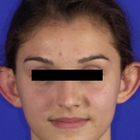
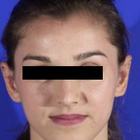
Front view
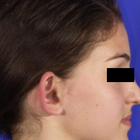
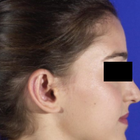
Full-side view
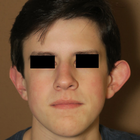

Front view

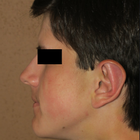
Full-side view
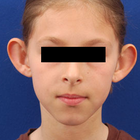
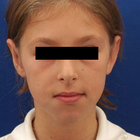
Front view
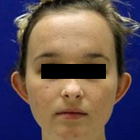
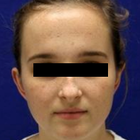
Front view
WHY US?
At Medijump, we're making medical easy. You can search, compare, discuss, and book your medical all in one place. We open the door to the best medical providers worldwide, saving you time and energy along the way, and it's all for FREE, no hidden fees, and no price markups guaranteed. So what are you waiting for?

Free

Best Price

Widest Selection

Risk-Free
What you need to know about Otoplasty in Hamburg

Otoplasty, also referred to as cosmetic ear surgery, is a type of cosmetic procedure to change the size, shape, or position of the ear. It is performed on the visible part of the outer ear, called auricle. Some people choose to have the surgery to correct odd-shaped ears due to an injury or birth defect. Others have it because they are concerned with how their ears protrude too far from their head. Otoplasty can be performed at any age after the ears have reached their full size, generally after age 5. In some cases, the surgery may be done as early as age 3.
There are several types of otoplasty. The following are the most common:
- Ear pinning draws the ears closer to the head. It is usually done on people whose ears stick out too far from their head.
- Ear augmentation is ideal for individuals whose ears are small or have not completely developed. This type of otoplasty can increase the size of the outer ear.
- Ear reduction is usually done on people with macrotia, which is a condition when the ears are larger than normal. Otoplasty can reduce the size of the ears.
What does a Otoplasty Procedure Involve?
Otoplasty is typically carried out under local anesthesia with a sedative, so you will be awake but you will not feel any pain. In some cases, general anesthesia may be used, typically for younger children.
The techniques used by your surgeon vary based on the type of otoplasty you are having. In general, your surgeon makes an incision either within the inner creases of your ears or on the backs of your ears. Then, your surgeon manipulates the tissue of the ear, which may include removal of cartilage or skin, grafting of cartilage to the ear, or folding and shaping of cartilage using permanent stitches. Once your surgeon is done correcting the shape, size, and position of your ears, the incisions are closed with stitches.
How Long Should I Stay in Hamburg for a Otoplasty Procedure?
Otoplasty can take between 1 and 3 hours to perform, depending on the complexity and the specifics of the procedure. It is typically done as an outpatient procedure, which means you can leave the hospital on the same day. It is recommended that you stay in Hamburg for 7 more days for follow-up checkups and removal of stitches.
What's the Recovery Time for Otoplasty Procedures in Hamburg?
The recovery period may vary from one person to another. You may experience numbness for several weeks, and mild bruising for about 2 weeks. For several months, your ears may feel stiff and sore.
You should be able to go back to work and resume your normal activities, including exercise, within one to two weeks after surgery. Physical contact sports, such as rugby, football, or judo, should be avoided for at least 3 months. You should also avoid swimming for up to 8 weeks following your otoplasty.
What sort of Aftercare is Required for Otoplasty Procedures in Hamburg?
Your surgeon will provide post-operative instructions. Make sure to follow the instructions carefully to promote smooth and quick recovery. You should rest with your head elevated on 2-3 pillows to minimize swelling. It is recommended that you eat a light, soft, and cool diet for several days. Take pain medication as prescribed by your doctor. Avoid sleeping on your side or rub the incisions to keep pressure off your ears. Consider wearing shirts with loose-fitting collars or button-down shirts.
What's the Success Rate of Otoplasty Procedures in Hamburg?
Otoplasty is a safe and effective procedure, with high satisfaction rates. More than 90% of people who had the procedure claimed to be extremely happy with the results. Note that it may take some time for the result to be fully visible.
While it is a safe procedure, you still need to be aware of possible risks and complications that otoplasty carries. These include bleeding, hematoma formation, infection of the skin, infection of the cartilage of the ear, permanent or temporary numbness around the affected area, scar or keloid formation, unfavorable results, prolonged pain, narrowing of the external ear canal, impaired healing, changes in skin sensation, asymmetry, and overcorrection.
Are there Alternatives to Otoplasty Procedures in Hamburg?
There are not many viable alternatives to otoplasty as of yet. One of the most popular alternatives is nonsurgical otoplasty, which does not require any incisions. The procedure uses special sutures to pin the ears back and achieve a more symmetrical look. These sutures are woven into the ears and will remain in place permanently. They are also virtually invisible, so the results will look natural.
For babies under three months old with prominent ears, ear-molds can be taped to their ears to reshape the ears without surgery. This type of treatment typically takes about six to eight weeks.
What Should You Expect Before and After the Procedure
Before otoplasty, you may have prominent or large ears or other deformity caused by an injury or birth defect that bothers you. Some people also feel self-conscious and embarrassed by the shape, size, and position of their ears. After the procedure, your ears will be corrected. Small or underdeveloped ears will be augmented to increase the size, the size of large ears will be reduced, and prominent ears will be drawn closer to the head. Your appearance will improve and you may feel more confident.
Whilst the information presented here has been accurately sourced and verified by a medical professional for its accuracy, it is still advised to consult with your doctor before pursuing a medical treatment at one of the listed medical providers
No Time?
Tell us what you're looking for and we'll reachout to the top clinics all at once
Enquire Now

Popular Procedures in Hamburg
Prices Start From $28

Prices Start From $1,945

Prices Start From $120

Prices Start From $275

Recommended Medical Centers in Hamburg for Otoplasty

- Interpreter services
- Translation service
- Religious facilities
- Medical records transfer
- Medical travel insurance
- Health insurance coordination
- TV in the room
- Safe in the room
- Phone in the room
- Private rooms for patients available

- Interpreter services
- Translation service
- Religious facilities
- Medical records transfer
- Medical travel insurance
- Health insurance coordination
- TV in the room
- Safe in the room
- Phone in the room
- Private rooms for patients available

- Interpreter services
- Translation service
- Religious facilities
- Medical records transfer
- Medical travel insurance
- Health insurance coordination
- TV in the room
- Safe in the room
- Phone in the room
- Private rooms for patients available

- Interpreter services
- Translation service
- Religious facilities
- Medical records transfer
- Medical travel insurance
- Health insurance coordination
- TV in the room
- Safe in the room
- Phone in the room
- Private rooms for patients available

- Interpreter services
- Translation service
- Religious facilities
- Medical records transfer
- Medical travel insurance
- Health insurance coordination
- TV in the room
- Safe in the room
- Phone in the room
- Private rooms for patients available

- Interpreter services
- Translation service
- Religious facilities
- Medical records transfer
- Medical travel insurance
- Health insurance coordination
- TV in the room
- Safe in the room
- Phone in the room
- Private rooms for patients available

- Interpreter services
- Translation service
- Religious facilities
- Medical records transfer
- Medical travel insurance
- Health insurance coordination
- TV in the room
- Safe in the room
- Phone in the room
- Private rooms for patients available
Otoplasty in and around Hamburg
About Hamburg
Hamburg is the second-largest city in Germany. It is a port city and it is also the second-busiest port in Europe. Famous for its parks and canals, this eclectic city is filled with iconic architecture, delicious cuisines, music, and lively nightlife. Hamburg also enjoys an excellent reputation in the field of medical tourism. The hospitals in the city boast highly-trained specialists offering remarkable standards of medical care. From prevention and diagnosis to treatment and aftercare, medical tourists are sure to receive the best care. Numerous hospitals and clinics provide the highest standard of healthcare as well as world-class medical care around the clock. Cutting-edge hospitals, experienced specialists, and advanced techniques in line with the very latest scientific findings are the reason why its healthcare sector is thriving.
Popular Parts of Hamburg
As a port city, much of the city’s character comes for its port, which is why the harbor tour is very popular. The harbor tour allows visitors to admire the city from a different perspective. Those who love art should visit Hamburger Kunsthalle, which is the city’s premier art gallery offering a wide collection of Germany’s master painters. Any visitor who loves shopping should go to Altona, an elegant neighborhood where visitors can find an array of stylish boutiques, amazing restaurants, and bars. Hamburg is also known as one of the nightlife capitals of Europe. The center of the city’s nightlife is located in St. Pauli, a neighborhood filled with live music venues, dance parties, pubs, and cocktail bars.
Transport in Hamburg
Hamburg Airport is the international airport in Hamburg, which connects the city with numerous countries in Europe and the Middle East. Public transportation in Hamburg is efficient and convenient. Buses operate around the clock, including a special night bus (Nachtbus) service. The U-Bahn and S-Bahn trains are integrated, making it easy to get around the city. Visitors who want to get around with the U-Bahn and S-Bahn train can buy an individual ticket or an All-Day ticket, which is reasonably priced. Taxis are easily available and are reliable.
Visas in Hamburg
Since Germany is part of the Schengen Area, citizens of several countries, such as Australia, Canada, and the US, can visit and stay in the country without a visa for up to 90 days. Citizens of other countries are required to apply and obtain a visa prior to their arrival. It is recommended to always check the requirements for the visa application before applying.
Weather in Hamburg
Summer, starting from June to August, has an average temperature of 24°C, making it a popular time to visit the city. However, the temperatures can rise to 30°C on some very hot days. Winter can be very cold, with the temperatures dropping below 0°C. The seasons of spring (March-May) and autumn (September – October) has pleasant weather with warm temperatures.
Additional Info
- Local Currency: The local currency is the Euro (EUR). 1 EUR converts to approx. 1.12 USD.
- Money & Payments: ATMs are widespread around the city. Credit cards are widely accepted and tipping is common.
- Local Language: German is the official language. Most people, particularly in tourist areas, will speak little English.
- Local Culture and Religion: The largest religion is Christianity and Islam is the second-largest religion. Judaism, Buddhism, and Hinduism are also freely-practiced.
- Public Holidays: Some of the most celebrated public holidays are New Year’s Day, Day of German Unity, Reformation Day, and Christmas Day.
Popular Searches
- Plastic Surgery in Thailand
- Dental Implants in Thailand
- Hair Transplant in Thailand
- Breast Augmentation Thailand
- Gastric Sleeve in Thailand
- Gender Reassignment Surgery in Thailand
- Laser Hair Removal in Bangkok
- Botox in Bangkok
- Dermatology in Bangkok
- Breast Augmentation in Bangkok
- Coolsculpting in Bangkok
- Veneers in Turkey
- Hair Transplant in Turkey
- Rhinoplasty in Turkey
- Stem Cell Therapy in Mexico
- Rhinoplasty in Mexico
- Liposuction in Mexico
- Coolsculpting in Tijuana
- Rhinoplasty in Korea
- Scar Removal in Korea
- Gastric Sleeve in Turkey
- Bone Marrow Transplant in India
- Invisalign in Malaysia
- Plastic Surgery in the Dominican Republic
- Tummy Tuck in the Dominican Republic
- Plastic and Cosmetic Surgery in Poland
- Rhinoplasty in Poland
- Hair Implant in Poland
- Dental Implants in Poland
- IVF in Turkey


